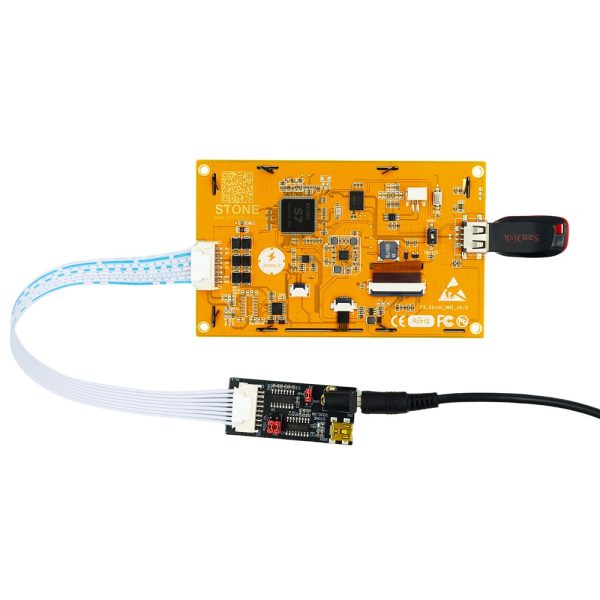
适用于卡片阅读器串口屏
在卡片阅读器设备领域,串口屏作为用户与系统交互、查看交易详情及接收提示的关键界面,发挥着至关重要的作用。为卡片阅读器应用选择合适的串口屏,对于确保可读性、耐用性、安全性及用户体验至关重要。本文将探讨多种专为卡片阅读器设备设计的串口屏方案,重点介绍其核心特性与优势。
了解卡读卡器组态屏
LCD(串口屏)技术彻底改变了卡读卡器显示屏,提供了更高的可见性、可靠性和功能性。集成到卡读卡器设备中的组态屏对于传达交易信息、显示提示以及促进用户交互至关重要。这些显示屏旨在为客户和操作员提供清晰、简洁且用户友好的界面,确保交易顺畅且安全。
高对比度组态屏
- 高对比度组态屏
- 高对比度组态屏具备增强的对比度和亮度水平,即使在光线强烈或直射阳光的环境下也能确保最佳可视性。
- 这些显示屏呈现清晰的文字和图形,使用户能够轻松阅读交易细节和提示信息。
- 适用于户外或光线明亮的场所,如ATM机、自助终端和支付终端,这些场所对卡读取设备显示的可视性要求极高。
防眩光组态屏
- 防眩光组态屏
- 防眩光组态屏配备特殊涂层或薄膜,可减少反射并最小化眩光,提升在光线变化环境中的可读性。
- 通过减少眩光和反射,这些显示屏确保交易细节和提示清晰可见,提升用户体验和交易效率。
- 适用于安装在室内环境中、存在顶部照明或反射表面可能导致眩光或视觉失真的卡读取设备。
触摸屏组态屏
- 触摸屏组态屏
- 触摸屏组态屏提供交互式功能,允许用户轻松输入PIN码、选择交易选项并浏览菜单。
- 电容式或电阻式触摸技术提供响应迅速且准确的触摸输入,提升用户参与度并简化交易流程。
- 适用于需要直观用户界面、可定制选项和安全PIN输入功能的卡读取设备。
隐私组态屏
- 隐私组态屏
- 隐私组态屏采用专有技术限制可视角度,确保交易详情仅对指定用户可见。
- 通过防止旁观者查看敏感信息,这些显示屏在交易过程中提升隐私和安全性,降低未经授权访问或身份盗用的风险。
- 适用于安装在公共场所或高人流量区域的卡片阅读器设备,这些场所对隐私保护要求极高。
节能型组态屏
- 节能型组态屏
- 节能型组态屏采用先进的背光系统和节能功能,可在运行过程中最大限度地降低能耗。
- 通过减少能耗,这些显示屏有助于降低运营成本并提升环境可持续性,是卡片阅读器设备的经济型选择。
- 适用于需要长时间运行或采用电池供电的读卡器应用,其中能源效率至关重要。
选择合适的组态屏
为读卡器应用选择最合适的组态屏需考虑以下因素:
1. 可视性和可读性
- 评估显示屏的对比度、亮度和防眩光性能,确保在各种光线条件和视角下均能清晰显示。
2. 触摸屏功能
- 根据用户偏好、交易需求及安全考虑,确定是否需要触摸屏功能。
3. 隐私与安全
- 考虑隐私功能,如有限视角或隐私滤镜,以保护敏感交易信息并保障用户隐私。
4. 能源效率
- 评估显示屏的功耗及节能特性,以在设备生命周期内降低运营成本并减少环境影响。
5. 耐用性和可靠性
- 选择结构坚固、组件耐用的组态屏,以承受频繁使用、环境因素及潜在物理损坏。
结论
综上所述,选择合适的组态屏对于优化卡读取设备性能、安全性和用户体验至关重要。无论是高对比度显示屏以提升可视性,触摸屏显示屏以实现交互功能,还是隐私显示屏以增强安全性,每种类型均具备独特优势,适用于不同卡读取应用场景。通过综合考虑可视性、触摸屏功能、隐私保护、能效及耐用性等因素,制造商和运营商可选择最适合其读卡器设备的组态屏,确保为用户提供顺畅且安全的交易体验。